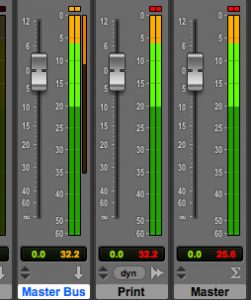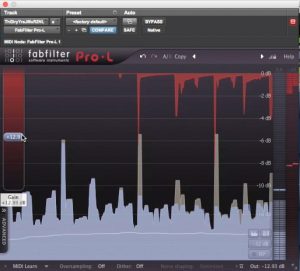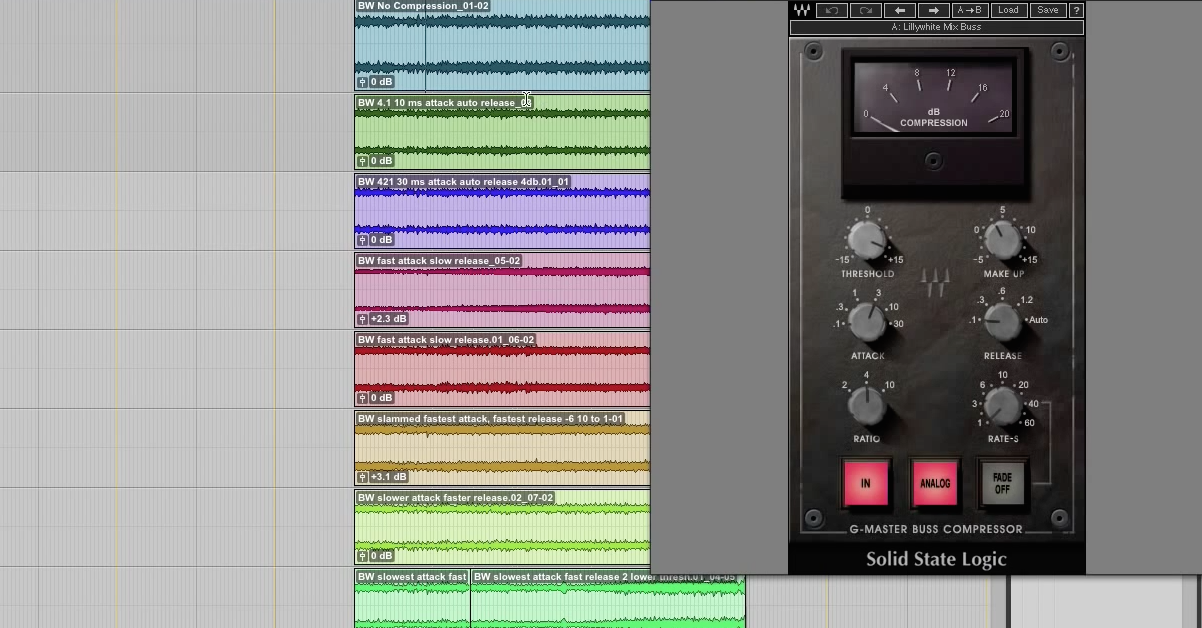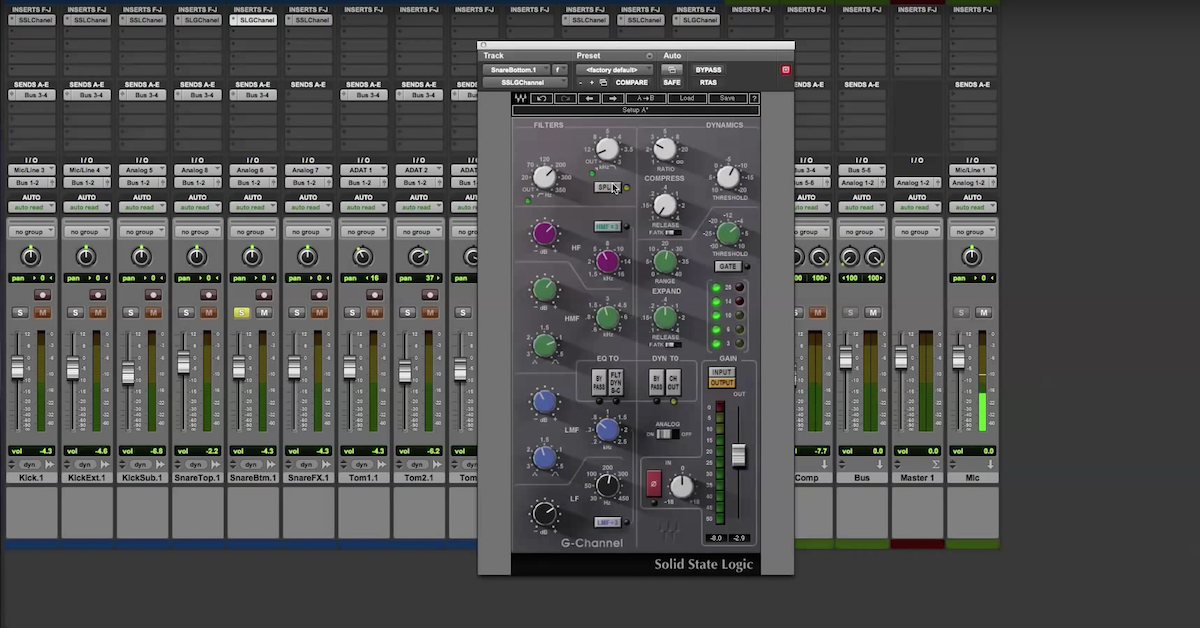9 Mix Bus Mistakes You Don’t Know You’re Making
Article Content
I felt like the commander of a spaceship.

I’ll never forget the first time I mixed on an SSL…
There were so many knobs.
And when I automated stuff, the faders actually moved.
I’ll never forget the first time I mixed on an SSL.
It was so cool.
But the coolest thing?
That SSL mix bus compressor.
From the moment I kicked it in and watched the meter dance, I was hooked.
In the year that followed, I became obsessed with my mix bus. I piled on every plugin I could find. I copied the chains of my favorite mixers. “What’s on your mix bus?” became my favorite ice breaker.
But along the way, I made every mistake in the book. I crushed, slammed, distorted, over-compressed, and over-EQ’d nearly every mix I made. When I listen to these tracks today, I cringe.
The good news?
You don’t have to repeat my mistakes.
Avoid these nine pitfalls, and you’ll sidestep some of my biggest mix bus slip-ups.
1. You think the mix bus is where the magic happens
When I first discovered you could add processing to the mix bus, I was pumped.

Mix bus processing is like the cherry on top of a bowl of ice cream.
I thought—this must be what’s separating my mixes from the pros!
Oh, how wrong I was.
The truth?
Mix bus processing is like the cherry on top of a bowl of ice cream. Will it transform a crappy flavor into a killer one? Definitely not. Is it even necessary? Eh. You can certainly get by without it.
The mix bus is not where the magic happens. Crafting a great mix takes a lot more than proper mix bus processing. I wish it was that easy…
2. You add processing too late
Add mix bus processing at the end of a mix, and you can easily destroy the delicate balance you’ve spent days crafting.
For better results, add it early and mix into it. This way, every decision you make throughout the mixing process will be shaped by what it’s doing.
The result?
You’ll get all the benefits of mix bus processing without messing things up at the end of the line.
3. You try to fix problems on the mix bus
Many problems within a mix are caused by only one track.
For example—if your mix sounds muddy, there might be too much low end on a synth. Or maybe the lower midrange on a guitar is too thick.
Either way, when you make a move on your mix bus, you affect every track in your session.
Cut the low end there, and you cut it from every track in your mix.
Why do this if only one track is causing the problem?
This is a surefire path to a thin, wimpy mix.
Instead, find the source of the problem and fix it there.
The mix bus should be your last resort.
4. You don’t gain stage properly

If your mix bus looks like this, you’ve got a problem…
Many plugins sound different depending on how hard you hit them.
So to get the most out of your mix bus, make sure you’re hitting it at the right level.
A good rule of thumb?
Aim for around -18 dB on your DAW’s meters (this is average level…the peaks can jump above -18 dB). This will put you in the sweet spot of most plugins.
Get this right, and you’ll optimize your mix bus for peak performance.
5. You use fast-attack compression
Fast attack times are deceptive.
At first listen, they can make a mix sound smoother and more controlled.
But there’s a downside to using them…
They destroy transients.
Transients are the short bursts of sound at the beginning of notes. They add energy and life to music, and taming them can make a mix sound flat and unexciting.
Since slower attack times preserve transients, they’re usually a better choice (especially on the mix bus).
6. You’re too heavy-handed
Sometimes, aggressive mix bus processing makes sense. But most of the time, subtle is the way to go.
Be gentle. Low-ratio compression and broad, tempered EQ curves often sound best.
If you find yourself digging in deeper, make sure you’re not trying to solve a problem that can be fixed on an individual track (see #3 above).
7. You don’t use gain compensation on your limiter
Limiters are the most dangerous tools we’ve got.
Why?
Because in our quest to make things loud, we regularly destroy the mixes we’ve created.
But often, it’s not our fault.
See, most limiters have a major flaw.
As you add more limiting, your track gets louder.
Louder always sounds better. And this makes it difficult to determine when enough is enough.
The result?
We often end up crushing the mixes we worked so hard to create.
But there’s a solution…

Gain compensation makes it easy to determine the right amount of limiting for any mix.
Gain compensation.
This feature links the limiter’s input and output gain. When you turn the input up, the output turns down. So as you add more limiting, there’s no change in level.
Gain compensation makes it easy to determine the right amount of limiting for any mix. Just crank the input gain until the mix starts to sound smaller. Then back it off a bit.
Problem solved.
8. You pile on specialty processing
As modern mixers, we’ve got all sorts of fancy tools.
Saturators, stereo imagers, multiband compressors…
But the truth?
They all have their downsides.
Saturators can make a mix sound harsh and edgy. Stereo imagers can cause phase problems. Multiband compressors can create artifacts between bands. (There’s a reason why mastering engineer John Scrip calls them “maul-the-band” compressors…)
Do you really need all this stuff on your mix bus?
Probably not.
Instead, go back to basics. It’s amazing what proper balance, EQ and compression can do. Get this stuff right, and you’ll find you can often craft better mixes without these specialty tools.
9. You never touch the fader

Don’t be afraid to automate your master fader.
The master fader is a fader.
Yup…just like any other track in your mix.
Don’t be afraid to automate that puppy.
Bump it up a dB in the choruses to add impact. Pull it down in the outro to make the song feel smaller.
Do this right, and you’ll enhance the dynamics of your mix.
Featured image by Andrew Butitta (CC BY-SA 2.0, added contrast and saturation)
SSL console image by Audio Mix House (CC BY 2.0)
Cherry ice cream image by Javcon117 (CC BY 2.0)





